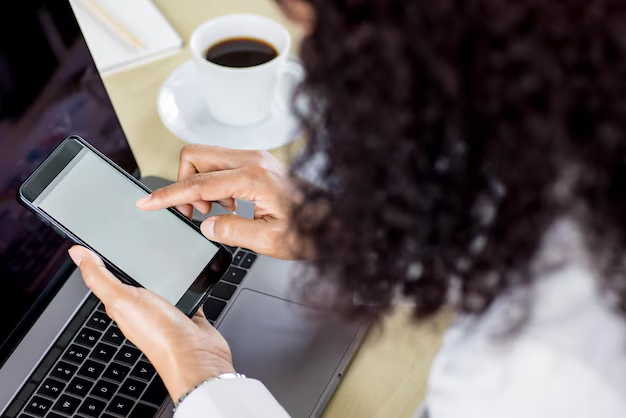Seamless Transition: Mastering the Transfer of Data from Old iPhone to New
Upgrading to a new iPhone can be an exhilarating experience. From the cutting-edge features to the sleek new design, it all adds to the joy of unboxing a brand-new device. But before you dive into enjoying your new gadget, there’s one essential task: transferring all your data, apps, and settings from your old iPhone to the new one. In this comprehensive guide, we'll explore the best methods to ensure a smooth and successful transition, while also diving into related topics that add depth and practical value.
Harnessing Apple's Built-In Features for a Smooth Transfer
Utilizing Quick Start
Quick Start is Apple's direct solution to your data transfer needs, providing a seamless experience when setting up your new iPhone. It requires both devices to be in close proximity.
How It Works:
- Power On: Switch on your new iPhone and place it next to your old device.
- Set Up: Your old iPhone will show a prompt to use your Apple ID for setup.
- Camera Activation: Align the animation visible on your new iPhone with your old device’s camera.
- Enter Passcode: Use your old device's passcode on your new iPhone.
- Transfer Your Data: Follow the on-screen instructions to transfer data wirelessly or through a wired connection for quicker results.
Pro Tip: Ensure both iPhones run on iOS 12.4 or later for Quick Start to function smoothly.
Using iCloud Backup
iCloud provides a convenient way to back up and restore your data effortlessly.
Steps to Follow:
- Back Up Your Old iPhone: Go to Settings > [your name] > iCloud > iCloud Backup > Back Up Now.
- Set Up Your New iPhone: Power on your new device and follow the initial setup instructions.
- Choose Restore: When prompted, choose “Restore from iCloud Backup”.
- Sign In: Log in with your Apple ID and select the latest backup.
Transferring via iTunes or Finder
For those who prefer local backups, iTunes on Windows and Finder on macOS Catalina or later offer reliable alternatives.
Steps for iTunes:
- Connect Your Old iPhone: Use a USB cable to connect to your computer.
- Backup: Open iTunes, select your device, and click “Back Up Now”.
- Set Up New iPhone: After the initial setup, choose “Restore from iTunes Backup”.
Steps for Finder:
- Connect: Use a USB cable to connect the old iPhone to your Mac.
- Backup: Select your device in Finder and click "Back Up Now".
- Restore: Once the new iPhone is connected, choose “Restore from this backup”.
Bringing Apps and Settings Over With Ease
Regardless of the method you choose, your apps and settings will automatically transfer during the data migration. However, it's critical to ensure that all apps are updated to avoid compatibility issues.
Re-Downloading Purchased Apps
After the data transfer, the App Store will automatically re-download your apps. If some apps are missing, you can reacquire them by visiting the Purchased section in the App Store.
Syncing Apple Watch
Paired Apple Watches are another consideration. Once your new iPhone is set up, you will be prompted to pair your Apple Watch again.
Ensuring a Smooth Transition Without Data Loss
Transferring data isn't just about the apps and settings. Photos, messages, and even your carefully curated music library need attention.
Photos and Media
iCloud Photo Library: When activated, this feature ensures all your photos and videos are stored in iCloud. Once signed in on your new iPhone, iCloud will automatically sync your media.
Messages
By using Messages in iCloud, your conversations will seamlessly continue on your new device. Enable it via Settings > [your name] > iCloud > Messages.
Troubleshooting Common Issues
Even with the best preparations, issues can arise during the transition. Here’s how to tackle them.
Low iCloud Storage
If you're encountering storage issues with iCloud, consider upgrading your plan or temporarily transferring some data through iTunes or Finder.
Connectivity Problems
Ensure both devices are connected to a stable Wi-Fi network and have sufficient battery life, or are connected to power sources.
Stalled Transfers
If a transfer process stalls, restart both devices and attempt the transfer again. Avoiding interruptions is key to a successful transfer.
Visual Summary: Key Takeaways 📝
Here's a quick list to skim through the essentials:
- 📱 Quick Start: Fast, wireless setup using both devices.
- 🗂️ iCloud Backup: Safe, convenient, and wireless.
- 🔌 iTunes/Finder: Local backups for a faster transfer.
- 📷 Photos: Use iCloud Photo Library for seamless access.
- 💬 Messages: Sync through Messages in iCloud.
- 🆘 Troubleshoot: Keep connections stable, restart if required.
Final Insight
Migrating to a new iPhone is an opportunity to rejuvenate your digital life, making your mobile use more efficient and enjoyable. By following the outlined steps and leveraging Apple's robust ecosystem, the transition from your old iPhone to a new one becomes a simple delight rather than a daunting task. Embrace the change, and enjoy the seamless experience a new iPhone offers.
Whether you're a tech-savvy individual or someone who occasionally dabbles in tech, understanding the nuances of data transfer equips you to get the most out of your new device instantly, without the fear of leaving anything behind.

Related Topics
- How Can I Transfer a Video From Iphone To Computer
- How Can I Transfer Apps From Iphone To Ipad
- How Can I Transfer Apps From One Iphone To Another
- How Can I Transfer Contacts From Iphone To Iphone
- How Can I Transfer Contacts From One Iphone To Another
- How Can I Transfer Data From Iphone To Android
- How Can I Transfer Data From Iphone To Iphone
- How Can I Transfer Data From Iphone To Samsung
- How Can I Transfer Files From Android To Pc
- How Can I Transfer From Iphone To Samsung